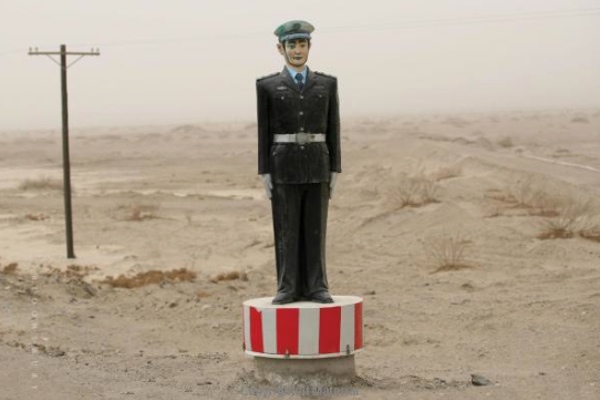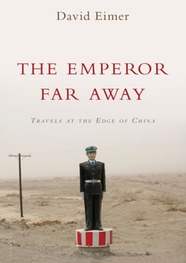Get Used to Hearing About Uighurs and Other Minorities in China's Borderlands. They're in an Angry Mood.

No one knows exactly how many tens of thousands of soldiers China is forced to keep in its troubled far western provinces of Xinjiang and Tibet. What is clear, though, is that those troops are needed more than ever to maintain Beijing’s authority in regions where the relationship between the indigenous peoples – the Muslim Uighurs of Xinjiang and the Tibetans - and the Han Chinese immigrants who have flooded into the far west in recent years has broken down irrevocably.
Since March 1st 2014, when a group of Uighurs launched an indiscriminate assault with knives at Kunming train station in southwestern Yunnan Province that left 29 people dead and over 140 wounded, the ruling Chinese Communist Party (CCP) has had to confront the unpleasant reality of a home grown terrorist campaign in the most distant reaches of its empire. Now, it is not the emergence of another pro-democracy movement like the 1989 Tiananmen Square protests that scares China’s politburo, but the very real prospect of an ongoing ethnic insurgency in its resource-rich borderlands.
 Little over a month after the Kunming
killings, another deadly incident took place at the train station in
Urumqi, Xinjiang’s capital. That attack came on the last day of
President Xi Jinping’s first visit to Xinjiang since he took over
as China’s leader in 2012. Subsequent violence broke out in July in
the ancient Silk Road oasis of Kashgar, the spiritual home of the
Uighurs, the ten-million strong ethnic minority who regard Xinjiang
as their homeland.
Little over a month after the Kunming
killings, another deadly incident took place at the train station in
Urumqi, Xinjiang’s capital. That attack came on the last day of
President Xi Jinping’s first visit to Xinjiang since he took over
as China’s leader in 2012. Subsequent violence broke out in July in
the ancient Silk Road oasis of Kashgar, the spiritual home of the
Uighurs, the ten-million strong ethnic minority who regard Xinjiang
as their homeland.
Like many of China’s 55 official ethnic minorities, the Uighurs speak their own language rather than Mandarin. Clustered in the border regions, most of the minorities have far closer ethnic, cultural and linguistic ties to the peoples across the nearby frontiers – in the case of the Uighurs the inhabitants of Central Asia -, than they do with the Han Chinese, who make up around 92% of China’s estimated 1.3 billion people. For many Uighurs, the Han Chinese are nothing more than a colonising power whose presence in Xinjiang has marginalised them both economically and politically.
Despite assertions by Chinese historians that Xinjiang has long been part of China, the vast area – around the size of Western Europe – was not incorporated as a full province of the country until 1884. Its name reflects that – Xinjiang means ‘New Frontier’ in Mandarin. Only after the communist takeover of China in 1949 was Xinjiang fully subjugated, and there have always been spurts of unrest such as the 2009 Urumqi riots that left almost 200 people dead as Uighurs and Han clashed over a number of days.
More than any other reason, it is the huge increase in Han migration to Xinjiang that has prompted the most recent hostilities. In 1947, there were 220,000 Han Chinese living in Xinjiang. Now, they number around eight million, or about 40% of the region’s population, and they control much of the economy, including the booming oil and natural gas industries. Chinese-run businesses hire Han staff, often insisting they are unable to employ Uighurs because they lack adequate Mandarin skills, leaving the locals with few options beyond subsisting as farmers.
For the Uighurs, it is the equivalent of 120 million Mexicans migrating to the USA and taking over the economy, while refusing to employ the natives and demanding they learn to speak Spanish. Add in the increasing restrictions on the Uighurs right to practise Islam, such as bans on children attending mosques and attempts to stop men growing beards and women wearing veils, and it is understandable how decades of frustration and anger have exploded in horrific violence.
Han immigration to Tibet has increased dramatically too, and was one of the causes of the riots that engulfed the Tibetan capital Lhasa in March 2008. Now, it is patrolled by soldiers 24 hours a day, while monks continue to self-immolate in protest at what they regard as clampdowns on monastic practises and the refusal of the CCP to let them openly display their allegiance to the exiled Dalai Lama.
Tibet, like Xinjiang, is home to huge amounts of untapped natural resources, especially minerals like copper and iron. Some Tibetans are sceptical about the CCP’s claim that, as in Xinjiang, they are pumping money into the region to lift living standards. The cynics point to the way airports are being built in isolated parts of the Tibetan plateau, saying they will not improve the lives of local yak herders but will provide access for Chinese mining companies.
Nor are Xinjiang and Tibet the only borderlands where the CCP’s control is being tested. In the southwest, Yunnan Province’s 2400-plus mile boundaries with Myanmar and Laos have become China’s crime central. The combination of supremely porous borders that run through remote rainforest and the close links the ethnic minorities of Yunnan retain with their relatives across the frontiers in the notorious Golden Triangle have resulted in a huge influx of heroin and methamphetamine into China.
In the 1970’s and 1980’s, much of the heroin produced in the Golden Triangle ended up in North American cities. Now, it is destined for the unknown millions of Chinese addicts, a number growing all the time. And with drug production in the hands of private militias beyond the control of the Myanmar authorities, there is little Beijing can do to stop it.
The far northeast of China too, remains inherently unstable thanks to the presence next-door of North Korea. The region is home to the vast majority of China’s two million-odd ethnic Koreans. So many are now converting to Christianity, a religion viewed with deep distrust by the CCP because of its western origins, that in August Beijing launched a crackdown on the undercover South Korean and American missionaries who spread the word there. Hundreds have since been deported.
Such heavy-handed tactics are the tried and trusted way the CCP responds to challenges to its rule. The terror attacks in Xinjiang were followed by mass executions – some in public at sports stadiums. Thousands more Uighurs have been arrested. In the most mutinous areas of Tibet monasteries are barricaded from the locals by the army, while anyone suspected of assisting in a self-immolation faces a murder charge.
Virtually all of this is happening out of the public eye. Western journalists in China are already banned from Tibet and Tibetan areas in surrounding provinces. Now, it is more difficult than ever for the foreign media to operate in Xinjiang, meaning huge swathes of China are effectively locked down and inaccessible. Whether this imposition of virtual martial law will end Beijing’s borderland woes is doubtful. Instead, it appears to be a depressing replay of the cycle of repression and rebellion that has long characterised relations between the CCP and China’s most reluctant citizens.